Why I'm Going to New York
Are you coming to New York for the 2018 World Congress on Regional Anesthesia and Pain Medicine?
The 2018 World Congress will be held April 19–21, 2018, in New York City. This is the fifth time this meeting has been held—it happens only once every four years, and this is the first time it will be held in the United States. It brings together all five of the world's regional anesthesia and pain medicine societies: ASRA, the European Society of Regional Anaesthesia and Pain Therapy (ESRA), the Asian and Oceanic Society of Regional Anesthesia (AOSRA), the Latin American Society of Regional Anesthesia (LASRA), and the African Society of Regional Anesthesia (AFSRA). The three-day comprehensive meeting covers acute and chronic pain as well as regional anesthesia and includes five parallel session tracks; 47 workshops; and a preconference day of special sessions, including point-of-care ultrasound workshops, the ASRA Pain and MSK Interventional Ultrasound Certificate examination, and the European Diploma in Regional Anesthesia and Acute Pain Management (EDRA) exam.
Here, a few of the session chairs and speakers share a preview of some content being presented at this historic meeting and explain why they're going to New York. Register to attend now »
New blocks—why and how well do they work?
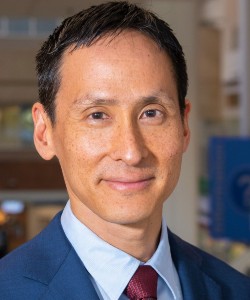
Ki Jinn Chin, MB, BS, FANZCA, FRCPC Anesthesiologist, Toronto Western Hospital, Toronto, Canada
I'm honored to be chairing the session on “New Blocks—Why and How Well Do They Work?” Even though ultrasound-guided regional anesthesia is more than 15 years old, we are still discovering new ways to use ultrasound to deposit local anesthetics in novel locations that have enormous potential impact on patient care. Particularly exciting for me is that many of these new block techniques also mark a shift toward making ultrasound-guided regional anesthesia safer and simpler to perform, thus putting it within reach of more of our colleagues.
For example, we will discuss new approaches to the infraclavicular brachial plexus block, which address the limitations of the classic ultrasound-guided technique. We will also feature the erector spinae plane block, a truncal block for thoracic and abdominal analgesia described just in the past year, generating a lot of interest because of its potential as an alternative to thoracic epidural or paravertebral blocks in challenging patients. I am also looking forward to discussions on the quadratus lumborum block and anesthesiologist-led, ultrasound-guided techniques of periarticular infiltration around the knee. From an intellectual point of view, I'm pleased to see that many of those new techniques have renewed our study of clinical anatomy, which was always a cornerstone of the art of regional anesthesia. I hope you will join our panel of clinical experts for what promises to be an engaging session that will inspire and educate us all.
Advances in neuromodulation
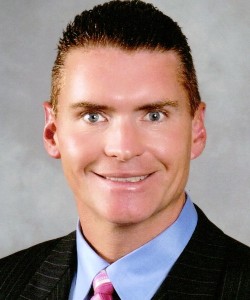
Timothy Deer, MD President and Chief Executive Officer The Center for Pain Relief, Inc. Charleston, West Virginia
I am going to New York to enjoy time with friends and colleagues and to explore the best practices I can use in my patient care to help more people who suffer from chronic pain. I am particularly excited about the panel on Advances in Neuromodulation. It is a rare event to have such a collaboration of experiences brought together as experts discuss the critical points of using neuromodulation to expand and perfect electrical medicine. Those attending will hear a great presentation on the best use of new feedback loops, dorsal root ganglion stimulation, waveform advances, and new software and hardware to advance the therapy. Perhaps more important than content is the panelists' evolution of ideas. Those ideas lead to the next device innovation, which then will undergo a long and tumultuous road of critical analysis, including level-one studies and in-depth evaluation of efficacy and safety. Those are the ideas that will lead to future device approvals and be the content of future world meetings.
In addition to the panels and discussion, the Congress offers an opportunity to participate in firsthand training in the area of implantable devices. This option will be important for both fellows and practicing physicians who want to advance their skills. In addition, we will dig deep into the proper use of opioids in non- cancer pain and discuss which algorithms are the most appropriate. Finally, the discussion of best algorithms will bring this together as a cohesive set of information that will help a great number of people.
So, my friends, as you can see, the reasons to go to New York are numerous. I am sure it will be an incredible time and an experience we all remember for years to come. Please join me and bring a friend to this amazing opportunity.
Enhanced recovery for total knee arthroplasty: A 360° roundtable discussion
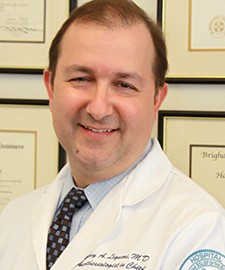
Gregory A. Liguori, MD Director, Department of Anesthesiology Anesthesiologist-in-Chief Hospital for Special Surgery Clinical Professor of Anesthesiology Weill Cornell Medical College New York, New York
The World Congress is shaping up to be the educational event of the decade for students of regional anesthesia and acute pain medicine. The hallmark of this World Congress is innovative educational sessions. One such session is “Enhanced Recovery for Total Knee Arthroplasty: A 360° Roundtable Discussion.”
Knee arthroplasty procedures in the United States are expected to exceed 3 million by the end of 2030. It will be one of the most-commonly performed procedures in the United States and beyond. It is also one of the most painful procedures currently being performed. A few years ago, patients could expect a long hospitalization followed by a grueling recovery period. Today, expectations for patients and their physicians are much different. Length of stay for most patients is less than 2 to 3 days, with many centers performing the procedures on an ambulatory basis. Surgical techniques, tourniquet times, and hemostasis strategies are much improved. Finally, anesthetic and analgesic options not only speed recovery and reduce pain but also contribute to improved long-term outcomes.
In “Enhanced Recovery for Total Knee Arthroplasty: A 360° Roundtable Discussion,” the perspectives of each participant in this operation will be explored. Why do patients choose to have knee replacement surgery? What are patients' expectations for the perioperative period and for the rehabilitation? Are patients adequately informed about what to expect? Do the surgeons' and anesthesiologists' perceptions of the perioperative course match the patients' actual experience? How do prehabilitation, physical therapy, and the home situation influence outcomes? What are surgeons' views of regional anesthesia and various analgesic techniques? What are the most important surgical variables for a successful knee replacement? What complications (eg, prolonged pain and stiffness) keep surgeons awake at night? Do anesthesiologists understand their patients' concerns about regional versus general anesthesia? What are the optimal regional techniques? How can anesthesiologists add value to knee arthroplasty during the perioperative period and beyond? Finally, is it safe to perform a knee arthroplasty on an ambulatory basis? If so, what is the advantage for the patients? What are the surgical concerns and considerations? How can the anesthesiologist facilitate safe discharge?
These are some of the topics that will be covered in an informal conversation among the experts during this session. We look forward to your attendance and participation in this novel educational session.
"How I do it" sessions
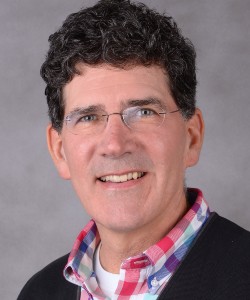
Brian Harrington, MD Physician Billings Clinic Hospital Billings, Montan
The 2018 World Congress on Regional Anesthesia and Pain Medicine will afford exceptional opportunities to learn and refine state-of-the-art regional anesthesia techniques directly from the world's experts. The two scheduled interactive video sessions on “How I Do It: Tips,” for example, are specially designed to share regional anesthesia pearls in a format that is:
- Audience-driven: Short videos will be shown that have been submitted by anesthesiologists in attendance at the meeting.
- Loose and interactive: Although the videos are educational and often entertaining, their primary purpose is to prompt a professional dialogue with the audience.
- Current and authoritative: A dynamic panel has been assembled for each session, with topics from several expert perspectives.
- Fast-paced and engaging: Topics will shift frequently because each video newly sets the stage for a fresh discussion.
One interactive session will be dedicated to peripheral nerve and intramuscular plane blocks and another to paravertebral and neuraxial blocks. Come to New York and be a part of this unique educational experience!
Content for chronic pain specialists
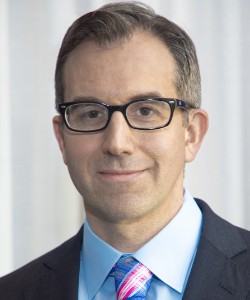 David Provenzano, MD President Pain Diagnostics and Interventional Care Sewickley, Pennsylvania
David Provenzano, MD President Pain Diagnostics and Interventional Care Sewickley, Pennsylvania
Why should you come to New York City in the spring if you are a chronic pain specialist? The answer is to receive current, advanced, and comprehensive education for interventional and noninterventional pain management care. Traditionally, the spring ASRA meetings focus on acute and regional anesthesia. For the World Congress on Regional Anesthesia and Pain Medicine, national and international teachers will provide significant didactic and workshop content on the management of chronic pain.
The workshop offerings will cover all aspects of interventional care, including ultrasound-guided pain blocks, radiofrequency, neuraxial pain procedures, regenerative medicine, minimally invasive lumbar decompression, and fluoroscopic-guided pain procedures. On Wednesday, the ASRA Pain and Musculoskeletal Interventional Ultrasound certificate will be offered. The didactic sessions will have multiple special topics, including coverage of advanced neuromodulation techniques in collaboration with the International Neuromodulation Society. In this session, waveform and technology advancements will be discussed. Regenerative medicine, intrathecal, headache, and radiofrequency sessions will cover advancements in those areas. The lectures are being developed to assist practitioners in incorporating best practices into their clinical activities. We will also have sessions covering practice and medicolegal issues, including such topics as mitigating legal risk, protecting oneself from medical negligence, and understanding the USA Close Claims related to interventional pain medicine. Issues surrounding cannabis and opioid treatment will be analyzed.
Speakers will be coming from all five of the regional anesthesia and pain medicine world societies—ASRA, ESRA, LASRA, AFSRA, and AOSRA—and the Congress will include physician assistant, nurse practitioner, and nurse educational tracks. Furthermore, the research portion of the program will be strong with abstracts from all over the globe. We encourage you to submit your research to the meeting.
The World Congress will be a state-of-the-art educational activity that chronic pain specialists should not miss. We look forward to seeing you in Times Square in April!
Learn More About Regenerative Medicine
Rush University Orthopedic Surgeon Brian J. Cole, MD, is among the experts presenting the “Regenerative Medicine Symposium: Sports Medicine/Injury” session on Thursday, April 19, from 3:30–5 p.m. He will provide a “Critical Appraisal of Techniques of Regenerative Medicine.” The session will also include presentations by Dmitri Souza, MD, Gregory Lutz, MD, and Aaron Calodney, MD. Listen to some of Dr. Cole's insights in “Sparing the Scalpel: A Surgeon's Perspective on the Future of Orthopedics | Brian Cole | TEDxRushU” on YouTube.
NYSORA Mini-Boutique Workshop
The New York School of Regional Anesthesia (NYSORA) will present its “Mini-Boutique Workshop: 3D Anatomy and Lower Abdominal and Extremity Blocks” on April 21 from 8–11:45 a.m. in conjunction with the World Congress. This workshop is a short version of one of NYSORA's most popular workshops. The session will consist of brief didactic instructions, followed by 3D and attorney presentations and ultrasound scanning demonstration. The delegates then break up into small groups with instructors for practical, hands-on scanning and case management discussions. Boutique workshops have just become even better with the introduction of the most sophisticated tissue simulators to date: MiniSims. NYSORA's proprietary MiniSims allow training in ultrasound tissue recognition and practice in hand-eye coordination using in- plane and out-of-plane United States guidance approaches.
Instructors are Admir Hadzic, MD, PhD, Michael Akerman, MD, Daryl Henshaw, MD, J. Doug Jaffe, MD, Ana Lopez, MD, and Catherine Vandepitte, MD.
Session objectives:
- Review the anatomy for the most clinically applicable nerve block techniques.
- Review updates on the techniques.
- Understand the mechanisms of complications and discuss strategies for their prevention.
- Review emerging technologies in nerve blocks.
- Review functional and 3D as a basis of the practice of peripheral nerve blocks.
NYSORA will not be offering its spring meeting in order to support participation in the 2018 World Congress.
Leave a commentOrder by
Newest on top Oldest on top